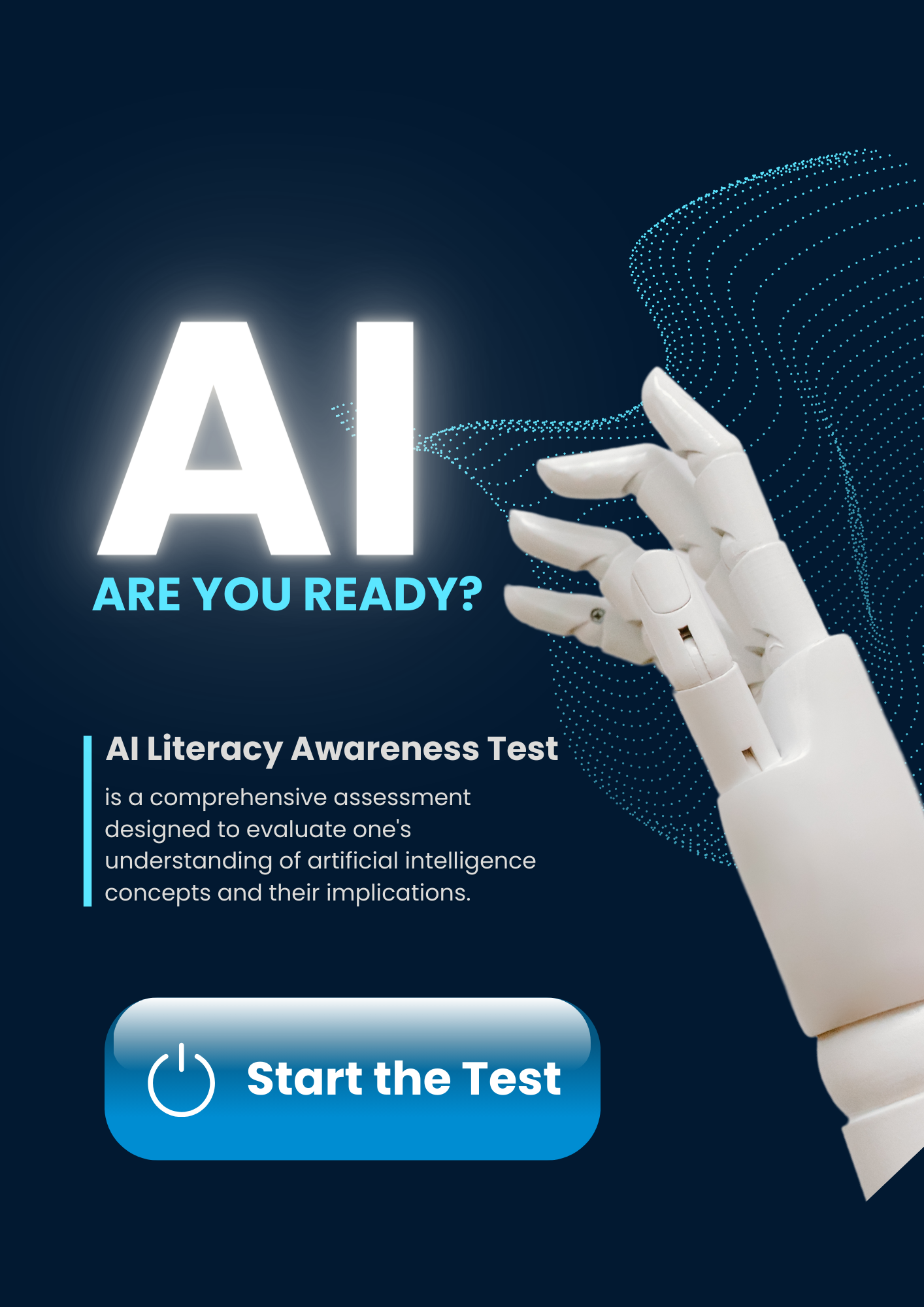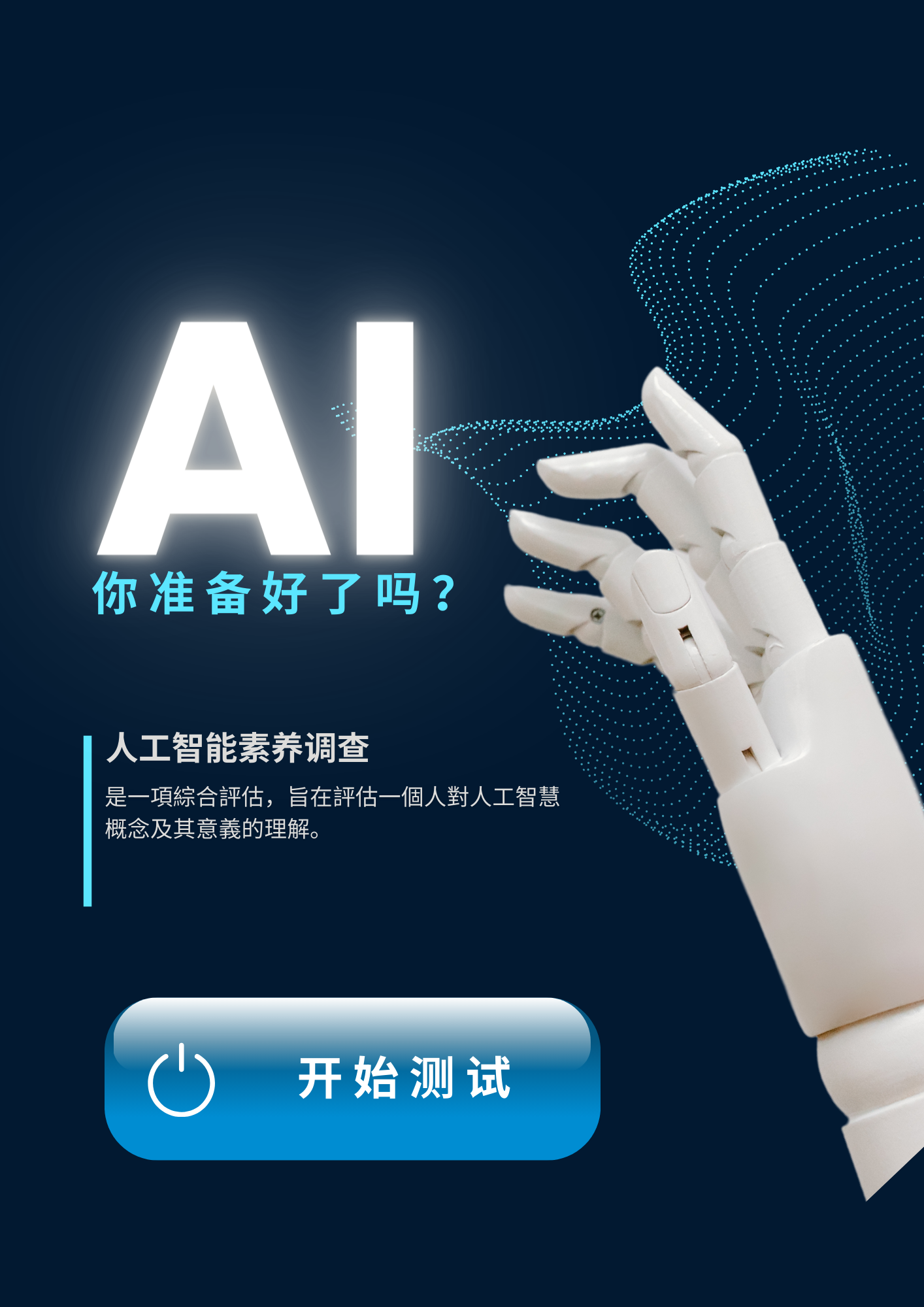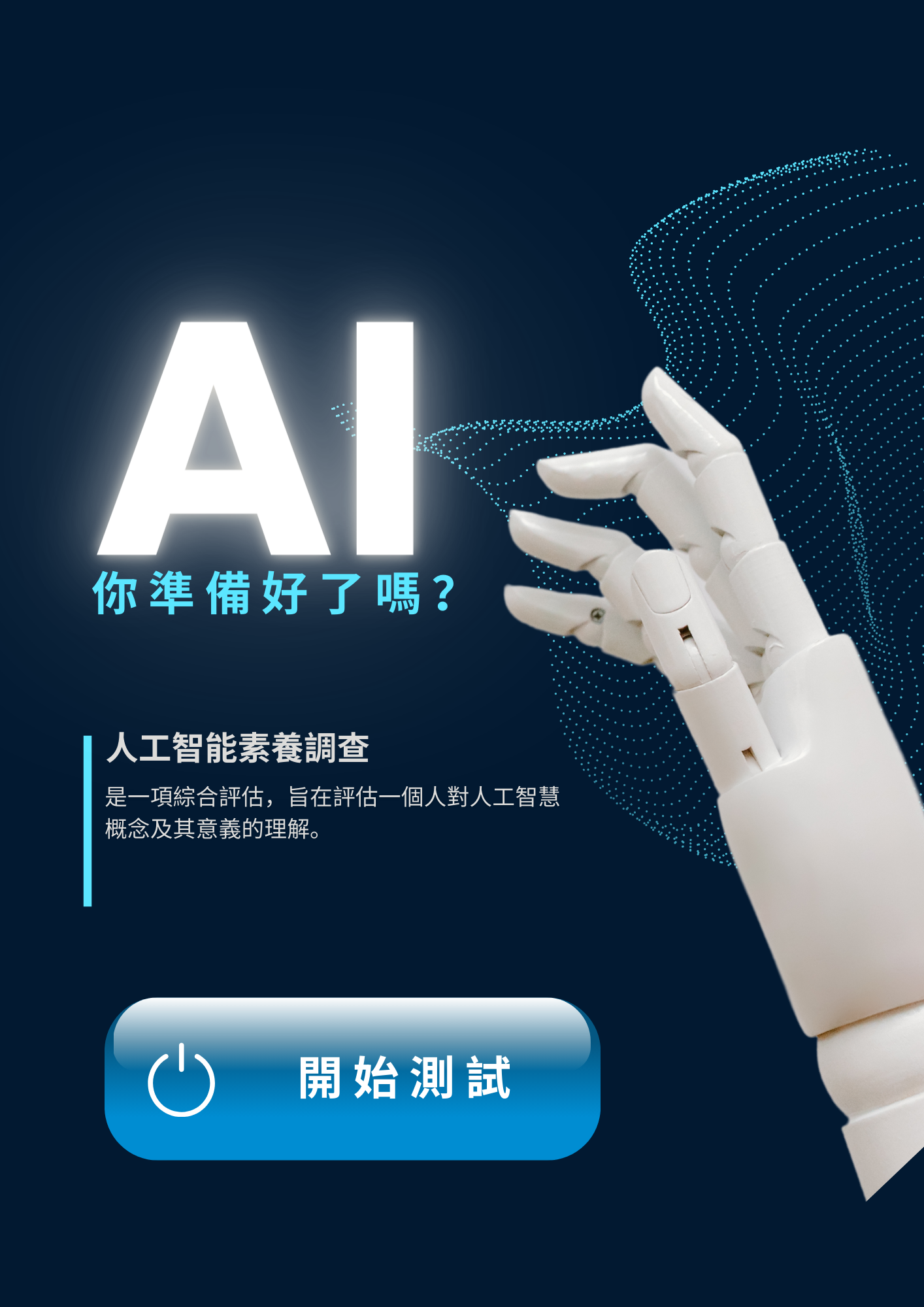Open-ended Questions 開放性問題 开放性问题
In your DISCIPLINE and ROLE, other than the items covered in this survey, what additional elements of "AI Literacy" do you think are important? Please explain. (*: compulsory): 在您的和角色中,除了本次調查涵蓋的項目之外,您認為「人工智慧素養」的哪些其他要素很重要? 請解釋。(*: 必需填寫): 在您的职业和角色中,除了本次调查涵盖的项目之外,您认为「人工智慧素养」的哪些其他要素很重要?请解释。 (*: 必需填写):
Your Profile 你的個人資料 你的个人资料
| Rank | Name | Points |
|---|---|---|
| 1 | Leader Name | 1234 |
Unlike academic knowledge, holistic competencies must be developed through experience. For example, leadership skills cannot be learnt by reading a book; the learner must have the opportunities to observe and experience what leadership is. Hence, while the word ‘learn’ can be used to describe academic knowledge acquisition, the word ‘develop’ is preferable for describing holistic competency education.

Differences Between Holistic Competency Development and Academic Knowledge Learning
In academic knowledge acquisition, Biggs et al.’s 3P model (1987) is often cited and referred. The 3P model identifies factors that influence whether a student will take a deep or a surface approach to learning. The 3P model has three set of variables – Presage, Process and Product.
In the Presage stage, components focus on the environment including the characteristics of the students (e.g. demographic, prior knowledge and experience, and motivation) and the learning and teaching context from the teachers (e.g. assessment, workload and teaching methods).
In the Process stage of the 3P model, components that affect students’ strategies students to actually learn the academic knowledge within the learning environment are presented. Student approaches to learning (whether surface or deep) are typically set at this stage as it depends on the quality of teaching, clarity of goals.
The final Product stage includes the outcomes students are expected to learn achieve as a result of their learning process.
However, the 3P model described above does not apply to holistic competency development because a student adopting a deep approach to learning by seeking to understand the meaning of a holistic competency such as leadership skills, does not mean that he/she will be able to develop leadership skills. In other words, the words ‘deep’ and ‘surface’ with respect to learning academic knowledge are unsuitable in the context of holistic competency development. Instead, a new term “Approach to Develop” was coined by Chan in her Holistic Competency Development Framework (HCDF) which conceptualizes student engagement in experiential learning leading to the development of holistic competencies.
Holistic Competency Development Framework (HCDF)
Adapting Bigg’s 3P Student Approach to Learn model (1987), Chan and Yeung (2019) developed the Holistic Competency Development Framework (HCDF) to help us understand how holistic competencies can be developed (see the table). The HCDF consists of five key components that are fundamental to holistic competency development: 1) student characteristics; 2) rationale for learning; 3) students’ actual learning experience and perceptions and interpretations based on that experience; 4) students’ approaches to developing holistic competency; and 5) students’ development of holistic competency as outcomes. Chan and her team found that among 1232 undergraduate students in Hong Kong, there was a general agreement that holistic competencies are better developed through out-of-class, extra-curricular activities and daily experience. Yet, it can be observed from the figure below that majority of these activities are not compulsory, and are often initiated by the students themselves. Thus, as illustrated by the HCDF framework, students’ motivation and rationale is an important prerequisite for student engagement in the different learning experiences which promote holistic competency development. Their motivation and rationale can be meaning-driven, career-driven, course driven, family driven or even pleasure-driven.

Holistic Competencies Development Framework (HCDF) (Chan and Yeung, 2019)

A Classification of the Types of Learning Activities for Holistic Competency Development
Challenges in holistic competency development
By conducting a critical review of the literature, Chan and her team (Chan et al., 2017) identified and examined different challenges in the development of holistic competencies in higher education. As presented in the following figure, the challenges were categorized into eight categories under three main themes:
(1) Lack of Institutional and Curriculum Support
Many universities across the globe still find it difficult to shift their traditional thinking in recognizing holistic competency development as part of the curriculum, which often leads to a lack of support for teachers and students to strengthen this development. The lack of institutional support means teachers are not receiving adequate professional development to map out constructive teaching pedagogies and assessment aligning competency development. This is particularly true for research-intensive universities, where teachers are mostly rewarded for their research outputs instead of teaching quality. There is an imbalanced distribution of resources favoring research over teaching, even though teaching is the bread and butter of a university (Drummond et al., 1998; Jung and Chan, 2017).

Challenges in Holistic Competency Development: A Diagrammatical Representation of Main Themes and Categories (Chan et al., 2017)
(2) Operational Challenges: Conceptualisation, Teaching Pedagogy and Assessment
As mentioned in our introduction on what is holistic competency, there are numerous terms and definitions. Teaching pedagogy and assessment may vary depending on teachers’ understanding and conceptualization of these competencies. Research has revealed teachers’ deficiency in accurately understanding some of these competencies, which lead to difficulty in mapping out constructive teaching pedagogies and assessment aligning competency development. For example, Chan and Lee (2021) found that teachers who are confused between communication skills and presentation skills tend to assess the former based on students’ overall presentation and not on a specific area of the presentation (Chan & Lee, 2021).
Assessment [insert hyperlink to the section on “Assessing Holistic Competency”] is obviously another major issue in holistic competency. Teachers tend not to be familiar with how to measure these competencies. At the same time, there is a lack of formal system and strategies for competency assessment, and competencies are often not “recorded, reported or certified” (Clayton et al., 2003, p.8). Of course, assessing holistic competencies are not just difficult as there is often no baseline, the assessment criteria is subjective Chan &Yeung’s study (2021).
Also, while experts in their own discipline, teachers often do not have the experience or knowledge to help students develop holistic competencies, especially when it comes to more affective types of competencies such as self-awareness and resilience (Callan, 2003).
(3) Teachers’ and Students’ Perceptions of Holistic Competency Development
To add to the sets of challenges, teachers’ and students’ perceptions can be another major drawback to successfully implementing holistic competency in the curriculum. Some university teachers still find the idea of embedding holistic competency development inside the classroom too ‘progressive’ and do not see it as their responsibility. As noted by Chan et al., (2017), “the longstanding and rigid sentiment in Asia that academic knowledge is the most important outcome of education has also encouraged students to focus on academic achievements at the expense of whole-person development” (p.6). However, we can observe that students’ attitude is slowly shifting, as research in recent years have found that students are aware of the importance of holistic competencies for their future career (Chan & Fong, 2018).



